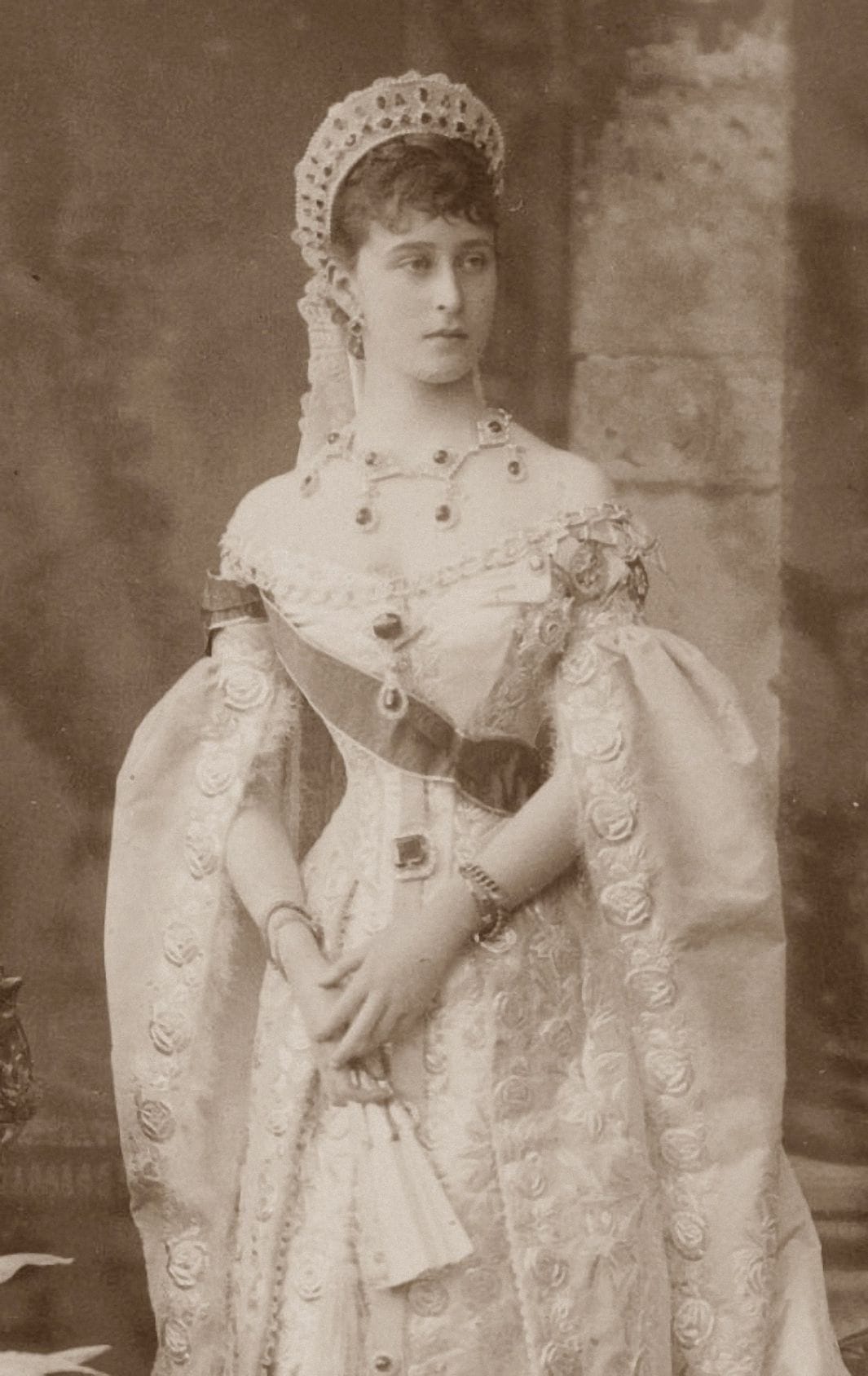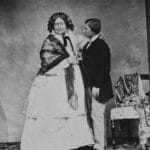Grand Duchess Elizabeth Feodorovna’s life was a remarkable journey from the privileged world of European royalty to a life of selfless service and ultimately, martyrdom. This article explores her multifaceted life, examining her formative years, her marriage, her unwavering faith, her tireless philanthropic work, and her tragic death during the Russian Revolution.
A Life Transformed: From Princess to Saint
Born Princess Elisabeth of Hesse and by Rhine in 1864, Elizabeth enjoyed a childhood surrounded by the opulence and influence of European royalty. Her upbringing, shaped by her deeply religious mother, Princess Alice (daughter of Queen Victoria), instilled in her a profound sense of compassion and faith. This foundation would significantly influence her later life choices. Her marriage in 1884 to Grand Duke Sergei Alexandrovich, a member of the Romanov family, marked a pivotal moment. Converting to Russian Orthodoxy and adopting the name Elizaveta Feodorovna, she fully embraced a new culture and faith, demonstrating a willingness to immerse herself in a dramatically different way of life.
Serving the Needy: Founding the Martha and Mary Convent
The assassination of her husband in 1905 profoundly impacted Elizabeth. Instead of retreating into grief, she channeled her sorrow into selfless service to others. In 1909, she founded the Convent of Saints Martha and Mary in Moscow, a haven for the city’s poorest and most vulnerable. The Convent wasn’t merely a charitable organization; it became a powerful symbol of hope and compassion in a city grappling with poverty and social unrest. Its work expanded during World War I, providing crucial care for wounded soldiers. This dedication to service suggests a deep-seated spiritual calling, transforming her life beyond the confines of her aristocratic background.
The Shadow of Revolution: A Tragic End
The Bolshevik Revolution of 1917 brought escalating turmoil and terror to Russia. Elizabeth’s unwavering faith and her continued dedication to helping those in need, however, marked her as a threat to the new regime, a symbol of the old order. Her arrest was viewed by many as inevitable. The details surrounding her exile to Alapaevsk and her subsequent murder in July 1918 remain chilling, particularly the shared fate with others associated with the former Romanov regime. The accounts, though widely accepted, still contain some level of uncertainty; research continues in order to potentially uncover more details and clarity surrounding the circumstances of her death.
A Saint’s Enduring Legacy: Faith and Resilience
Despite the horrific circumstances of her death, Elizabeth Feodorovna’s legacy continues to resonate profoundly. Her canonization as Saint Elizabeth Romanova by the Russian Orthodox Church in 1981 and her commemoration in Westminster Abbey are testaments to her enduring influence. These honors reflect more than simply her faith; they underscore her unwavering compassion, her selflessness, and her ultimate sacrifice. Some historians suggest her actions were a direct result of her profound faith, while others propose that her charitable works may have also served as a means of coping with the immense grief following her husband’s assassination. Ongoing research continues to explore the complexities of her motivations, suggesting that a singular, definitive answer might remain elusive. This ongoing scholarly interest, and perhaps even debate, highlights the enduring significance of her life. There is always a possibility of further details or new interpretations.
What Happened to Grand Duchess Elizabeth Feodorovna?
Elizabeth Feodorovna’s life journey, from princess to saint, is a compelling narrative of transformation and unwavering faith. This section details the key events of her life, from her privileged beginnings to her tragic end.
From Princess to Grand Duchess: A Life Transformed
Born a princess in 1864, Elizabeth’s early life was characterized by the luxury and social connections inherent in European royalty. However, her marriage to Grand Duke Sergei Alexandrovich in 1884 fundamentally shifted her life. Converting to Russian Orthodoxy, she fully integrated into Russian society and culture, adopting the name Elizaveta Feodorovna. This transition suggests a willingness to embrace a dramatically different, perhaps more challenging, existence.
A Heart for the Needy: Building a Haven of Hope
The assassination of Grand Duke Sergei in 1905 profoundly impacted Elizabeth. Rather than succumbing to despair, she channeled her grief into service, establishing the Convent of Saints Martha and Mary in 1909. This convent provided refuge, care, and spiritual support to the impoverished and vulnerable within Moscow. It’s a powerful testament to her ability to transform personal tragedy into action.
The Shadow of Revolution: A Tragic End
The Bolshevik Revolution brought an end to Elizabeth’s peaceful work. Her unwavering faith and association with the old regime made her a target. The details of her arrest, exile, and eventual execution in July 1918, alongside other members of the Romanov family and associates, remain a stark reminder of the brutality of this period.
A Saint’s Legacy: Faith, Resilience, and Remembrance
Despite her tragic death, Elizabeth Feodorovna’s legacy lives on. Her canonization as a saint is a testament to her unshakeable faith, tireless compassion, and ultimate sacrifice. Her story stands as a powerful example of faith, resilience, and unwavering service to others – a compelling narrative which continually inspires.
Key Moments in Elizabeth’s Life: A Timeline
| Date | Event |
|---|---|
| November 1, 1864 | Born Princess Elisabeth of Hesse and by Rhine |
| June 15, 1884 | Married Grand Duke Sergei Alexandrovich |
| February 17, 1905 | Grand Duke Sergei Alexandrovich assassinated |
| 1909 | Founded the Convent of Saints Martha and Mary |
| May 1918 | Arrested by the Bolsheviks during the Russian Revolution |
| July 18, 1918 | Executed, a victim of the revolution’s brutality |
| Post-1918 | Remains discovered, transferred to Jerusalem, and later canonized as a saint |
Reflecting on Elizabeth’s life, we see a powerful message of faith and resilience. Even in the face of overwhelming adversity, her compassion and commitment to serving others remind us of the enduring strength of the human spirit. Her story powerfully highlights the transformative impact of faith and selfless service.
Why is Grand Duchess Elizabeth a Martyr?
Grand Duchess Elizabeth Feodorovna’s journey from privileged princess to revered martyr saint is a compelling tale of faith, sacrifice, and unwavering compassion. Her life, marked by both joy and profound loss, ultimately led to her canonization, a recognition that requires a closer examination of the circumstances that shaped her life and tragic end.
The assassination of her husband, Grand Duke Sergei Alexandrovich, in 1905, served as a pivotal moment. This personal tragedy profoundly altered the course of Elizabeth’s life. Rather than retreating into grief, she channeled her sorrow into selfless service, a radical shift from her previous lifestyle. Many believe this marked a turning point toward her later martyrdom.
Elizabeth’s dedication to helping others wasn’t simply charity; it was a deeply spiritual commitment. The founding of the Martha and Mary Convent in 1909 exemplifies the depth of her devotion. She lived alongside the convent’s residents, sharing their hardships and offering unwavering support. This act itself foreshadowed her ultimate sacrifice.
The Russian Revolution created a climate of immense danger. By 1918, Elizabeth, outspoken in her faith and commitment to serving the poor, became a target for the Bolshevik regime. Her arrest, exile, and subsequent execution in July 1918, alongside other members of the Romanov family and their associates, serve as harrowing evidence of the Revolution’s brutality. Some experts suggest her association with the old regime made her an unavoidable target, while others suggest the depth of her faith sealed her fate. While some accounts remain unclear, researchers continue to investigate, potentially leading to further understanding. However, the core narrative remains consistent: Elizabeth died for her beliefs and dedicated service.
Her death was not simply an end, but a culmination. The Russian Orthodox Church’s recognition of Elizabeth’s sacrifice via her canonization as a saint cemented her status as a martyr—someone who died for their faith. Her memorial at Westminster Abbey underscores this international recognition and the far-reaching impact of her life.
However, the story isn’t without nuance. Some historical interpretations offer alternative perspectives on her motivations, prompting continued research and discussion. It’s important to acknowledge these diverse viewpoints, reinforcing the multifaceted nature of historical analysis.
Ultimately, Elizabeth’s selflessness, coupled with her unwavering convictions, underscores her profound influence. Her dedication to aiding the impoverished, coupled with facing death bravely for her faith, makes her story extraordinarily compelling. Her unwavering commitment to serving others, combined with her deep religious faith, cements her enduring legacy as a powerful icon.
| Year | Event |
|---|---|
| 1864 | Born Princess Elisabeth of Hesse and by Rhine |
| 1884 | Married Grand Duke Sergei Alexandrovich |
| 1905 | Grand Duke Sergei’s assassination |
| 1909 | Founded the Martha and Mary Convent |
| 1918 | Arrested, exiled, and executed |
| Post-1918 | Canonized as a Saint |
Key Takeaways:
- Elizabeth’s unwavering faith and compassion were central to her life.
- Her husband’s murder proved a watershed moment in her life.
- The Martha and Mary Convent embodies her unwavering commitment to service.
- Her death during the Russian Revolution underscores her martyrdom.
- Her canonization illustrates her enduring spiritual legacy.
- Ongoing research continues to shed light on the complexities of her life.
Her story continues to captivate and inspire. Ongoing research continues to unravel the intricacies of her life and legacy; this ongoing investigation emphasizes that our understanding of historical figures like Elizabeth Feodorovna remains a subject of ongoing evolution.
Did Ella and Sergei Have a Child?
The question of whether Grand Duchess Elizabeth Feodorovna (“Ella”) and Grand Duke Sergei Alexandrovich had children is frequently asked. The answer is no; they did not have any biological children. Their marriage, a grand event in 1884 at the Winter Palace, united two powerful European royal families, yet remained childless. This absence of biological offspring, however, doesn’t diminish the profound impact they had on history and the lives of many others.
Their relationship transcended the simple notion of biological lineage. They wholeheartedly embraced the role of guardians to their orphaned niece and nephew, Grand Duchess Maria Pavlovna and Grand Duke Dmitri Pavlovich, providing a caring and stable home environment. This nurturing act exemplifies family bonds formed through love and devotion, not solely through biological connection. While some accounts suggest a formal aspect to their relationship, Maria Pavlovna’s memoir notes a lack of close intimacy. It’s important to consider that such accounts can be subjective and limited; this perspective should not diminish their dedication to their niece and nephew. Evidence overwhelmingly suggests a commitment to their extended family.
Their devotion profoundly extended beyond traditional family ties. Ella’s conversion to Russian Orthodoxy deeply influenced their shared values, and together they dedicated themselves to philanthropic work. They weren’t mere benefactors; they were actively involved in assisting the needy and impoverished. The scale and lasting effect of their charitable endeavors serves as their most enduring monument.
The Russian Revolution tragically ended their lives. The assassination of Grand Duke Sergei in 1905 was devastating; however, Ella, unwavering in her faith, continued her compassionate work, founding the Martha and Mary Convent. This dedication ultimately led to her own martyrdom in 1918. Their deaths, though violent, solidified their place in history as icons of faith and commitment. Their story resonates not because of offspring, but because of their profound and selfless impact.
Historians and researchers continue to explore their lives and their contributions to Russian history. Ongoing research might offer nuanced insights into their personal dynamics and further enhance our understanding of their life together. Future studies may reveal fresh perspectives and modify our current historical understanding. There is always a possibility of acquiring new knowledge on this topic. The enduring interest in Ella and Sergei’s lives underscores the compelling nature of their story and the importance of their legacy. The absence of their own biological children does not diminish the enduring significance of their lives.
Timeline of Ella and Sergei’s Life
| Date | Event |
|---|---|
| June 15, 1884 | Marriage of Ella and Sergei |
| February 17, 1905 | Assassination of Grand Duke Sergei |
| 1909 | Establishment of Martha and Mary Convent |
| July 18, 1918 | Execution of Grand Duchess Elizabeth |
Key Takeaways:
- Grand Duchess Elizabeth Feodorovna and Grand Duke Sergei Alexandrovich had no biological children.
- Their lives were defined by a deep commitment to faith and charitable work.
- They provided a loving home for their orphaned niece and nephew.
- Their tragic deaths, during the Russian Revolution, cemented their enduring legacy of faith and selfless service.
[https://www.lolaapp.com/georgiana-cavendish-duchess-of-devonshire] [https://www.lolaapp.com/drusilla-of-mauretania-the-elder]















